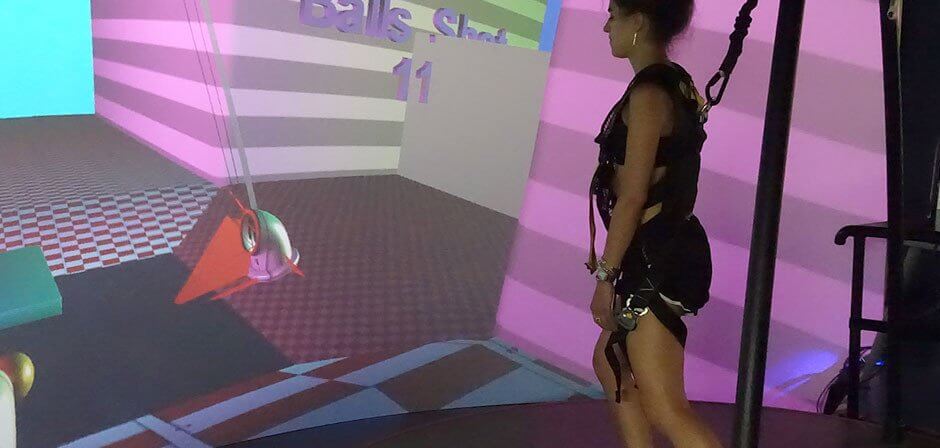Fibromyalgia (FM) is a pain syndrome that affects mostly women, although some men also suffer from the condition. The disorder is characterized by widespread heightened pain in muscles and joints, sleep disorders, poor balance, stiffness, depression, anxiety and low fitness levels.
Treatment of FM often focuses on pharmacological interventions and physical activities that promote balance and mobility. The primary objectives of treatment are to reduce pain and increase physical function, to improve performance of activities of daily living, and to enhance overall quality of life. Recently, virtual reality (VR) games have drawn attention as a potential alternative treatment for FM.
VR games use computer software that shows movements on a screen that the patient is asked to mimic, or sets goals that the patient must attain through physical actions. Programs can be modified to target specific body areas, and to change the level of difficulty. The system gives immediate visual feedback on how well the patient is performing.
VR games can be geared to aerobic activities like walking or dancing, postural control and coordination, or mobility and balance skills. A technician can select and control the types of activities and the level of difficulty for each patient. Activities can be selected according to patient preference. Key points for successful VR training include social interaction, games that pose progressive challenges, therapeutic movement patterns, and immediate feedback.
Exercise is known to improve FM symptoms, but adherence to exercise outside the clinical setting is often poor. Researchers Collado-Mateo et al., (2017) wanted to know if virtual reality games would be more motivating and enjoyable than traditional exercise in treating FM, and they set out to evaluate the effects of virtual reality (VR) games on mobility, balance and fear of falling in FM patients.
The randomized controlled study involved 76 female FM patients who were divided into two groups. The first group underwent an eight-week exercise intervention two times per week using VR games, while the control group continued in their regular activities. Baseline measurements of balance, fear of falling and mobility were established using standardized assessments. After eight weeks, patients were retested to see if VR rehabilitation had significantly improved balance, mobility and fear of falling in the experimental group, compared to the control group.
Results revealed:
- The exercise group exhibited significantly improved mobility
- The exercise group demonstrated significantly improved balance
- The exercise group reported a significantly reduced fear of falling
Exercise adherence was high during the experiment, with only one patient dropping out of the program. The research team concluded that VR games may provide an effective tool for treating FM patients, to promote exercise adherence, improve balance and mobility, and reduce the fear of falling.
At NYDNR, we use virtual reality physical therapy to treat a number of conditions, including fibromyalgia. Our high-tech clinic features C.A.R.E.N, a computer assisted rehabilitation environment that immerses patients in virtual reality as they perform various movement patterns and react to alterations in the training platform. C.A.R.E.N taps into the brain’s neuroplasticity to retrain faulty motor patterns and improve balance and mobility. Contact NYDNR today, to schedule your first C.A.R.E.N session.
Source
Collado-Mateo, Daniel, et al. “Exergames for women with fibromyalgia: a randomised controlled trial to evaluate the effects on mobility skills, balance and fear of falling.” PeerJ 5 (2017): e3211.























































